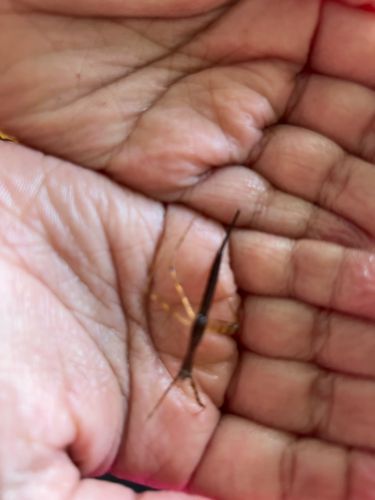Water Scorpion
Scientific Name: Nepa cinerea (or similar species within Nepidae)
Order & Family: Hemiptera, Nepidae
Size: Typically 15-45 mm (0.6-1.8 inches) in body length, excluding the respiratory siphon.

Natural Habitat
Slow-moving or still freshwater, such as ponds, ditches, and shallow vegetated margins of lakes. They prefer areas with aquatic vegetation where they can camouflage.
Diet & Feeding
Predatory. They are ambush predators, feeding on small aquatic insects, tadpoles, and small fish, which they catch with their modified raptorial forelegs.
Behavior Patterns
Water scorpions are well-camouflaged and often remain motionless among aquatic vegetation, waiting for prey. They breathe through a long, tube-like siphon at their posterior end, which they extend to the water's surface. They are not strong swimmers but can walk on the bottom of the water body or along submerged plants.
Risks & Benefits
Water scorpions can deliver a painful (though not venomous) bite if handled, but they are not considered dangerous to humans. Ecologically, they help control populations of other aquatic insects and small invertebrates, contributing to freshwater ecosystem balance.
Identified on: 9/6/2025